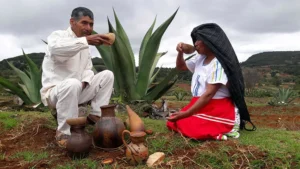Pulque Mexico: The Ancient Beverage of the Gods
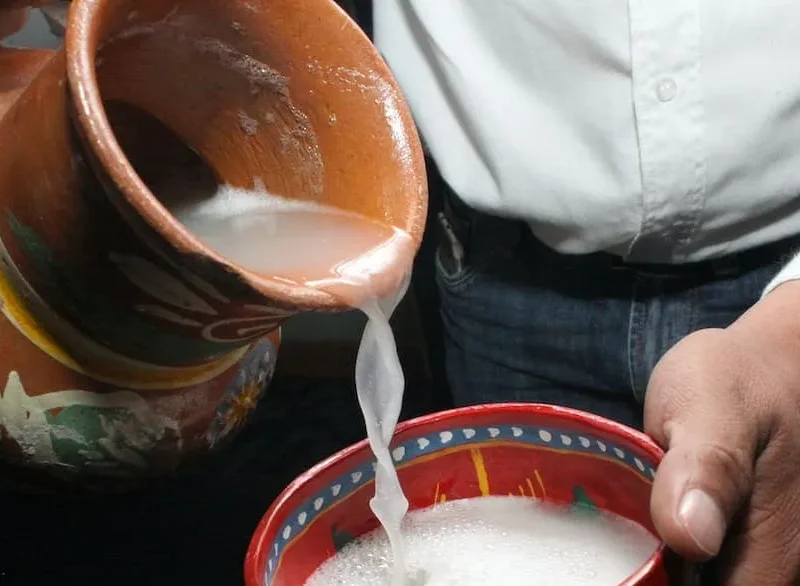
One of the most popular beverages that are part of the tradition in Aztec lands is Pulque Mexico, derived from the miraculous maguey.
Pulque Mexico is an alcoholic beverage of pre-Hispanic origin that is obtained from the stalks of the maguey and is made from the fermentation of mucilage.
The mucilage is an organic substance of viscous texture, typical of some vegetables, popularly known as “aguamiel” (mead).
The fermentation process of Pulque Mexico is carried out in “tinacales” (place where the pulque vats are installed).
And then, the mead is poured and mixed with the pulque seed or “pie de pulque” and from this moment the fermentation and transformation of the mead into pulque begins.
The process of pulque Mexico takes approximately 24 hours.
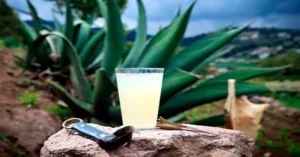
Pulque Mexico and its value
Believe it or not, pulque Mexico is so famous that it is consumed throughout the Mexican Republic and part of the United States.
But it is the favorite, both in production and consumption, in the Federal District, State of Mexico, Hidalgo, Tlaxcala, Morelos and Michoacán.
Pulque Mexico is traditionally attributed medicinal properties, such as relieving gastrointestinal disorders, stimulating appetite, combating weakness and improving certain kidney ailments.
Others believe that pulque Mexico is also used by lactating women to increase milk secretion and improve its quality.
READ HERE: THE RICH TRADITION OF PIÑATAS IN MEXICO
Today, it is estimated that the magueyales of the Llanos de Apan and the Mezquital Valley, in the state of Hidalgo, have produced the best pulque for as long as anyone can remember.
History of pulque Mexico
Pulque Mexico has its origins in pre-Hispanic times, before the arrival of the Spaniards in the 16th century.
The ancient inhabitants considered pulque as a sacred drink and associated it with the goddess Mayahuel, the deity of the maguey.
Actually, the maguey is a plant that has given rise to various beverages and concoctions.
It is believed that pulque Mexico was consumed in religious ceremonies and rituals, and its importance was such that even the gods enjoyed it.
With the arrival of the Spaniards, pulque faced competition from aguardiente and wine, but managed to survive and adapt to the new cultural influences.
In colonial times, pulque became a popular drink throughout Mexico. Over the centuries, it has experienced ups and downs in popularity.
The state of Hidalgo was during colonial times the main producer and supplier of pulque to the capital of the Viceroyalty.
In fact, the Jesuits were the first to produce pulque on an industrial scale.
Faced with the increase in the consumption of pulque during the XVI and XVII centuries, civil and ecclesiastical authorities tried to regulate its consumption at the same time that the plantation and industrialization of pulque through the haciendas increased.
The first regulations were issued in 1529 by Juana de Castilla where it was forbidden to mix roots to pulque in order to “avoid drunkenness and carnal and nefarious vices”.
In 1652 the viceroy Duke of Albuquerque established the first tax on pulque introduced to the capital of the viceroyalty.
By 1763, the tax on the sale of pulque was transferred to the royal coffers.
But at the beginning of the 20th century with the Mexican Revolution, pulque cultivation collapsed, and many fields were abandoned.
Increased production of pulque in Mexico
By the end of the 20th century, pulque production in Mexico was reaching new levels, even as tequila and mezcal rose in popularity.
For some, the process of cultural revaluation of pulque Mexico has allowed the increase in its demand, largely due to traditional festivities.
At the beginning of the 21st century, production reached new levels, and in recent years, production has grown steadily.
READ HERE: DISCOVER THE RICHNESS OF MEXICAN TRADITIONS
Despite this, in 2020, 167.2 million liters of maguey pulque were produced in the country, 2.5% less than the previous year, while the value of the commercialization of the beverage amounted to $820.4 million pesos.
Traditional production method of pulque Mexico
Pulque preserves much of its ancestral production processes, and in this sense, gives it a cultural richness.
Pulque is extracted from the pineapple of the maguey plant, which after 8 years is mature enough to extract the so-called aguamiel (mead).
For the elaboration of pulque in Mexico it is necessary to have a wooden barrel or plastic container with sufficient capacity for the liters of mead extracted.
It is estimated that each maguey gives between two and four liters of aguamiel on the two daily occasions that it is scraped; remember that this is the liquid given off by the plant.
It is also essential to have a sieve or plastic strainer and a long wooden shovel to stir the liquid deposited in the barrel.
The mead should always be fresh and strained at the moment of pouring it into the barrel.
The proper ratio for the mixture is 1:4, that is, approximately two and a half liters of seed for every ten liters of mead.
The mead is stirred into the barrel with the help of the shovel. From this point on, it is all a matter of waiting for the fermentation process to begin.
This is identified because the mixture produces an abundant foam, as well as a very pleasant aroma.
During the first hours, the mixture of strong pulque and mead will give rise to pulque campechano or tlachique.
This is a fermented drink with a high concentration of sugars from the aguamiel. For this reason, it is usually preferred by people who are not used to drinking pulque.
Extraction of mead for pulque Mexico
When the maguey has been composed and begins to give aguamiel, its raspa begins.
Twice a day the tlachiquero must make a tour of his magueys to extract the mead and scrape them.
Failure to do so could compromise the flavor of the pulque or even totally lose the production of aguamiel.
The tlachiquero is in charge of extracting the pulque, who uses an ancestral tool called acocote.
With the acocote he sucks with his mouth to extract the aguamiel from the maguey. The liquid is then poured into a leather container.
The necessary tools for the raspa are the castrador, the acocote and the leather.
The reality is that nowadays many tlachiqueros have substituted the acocote for plastic bottles with a long hose on the nozzle, and the leather for plastic demijohns.
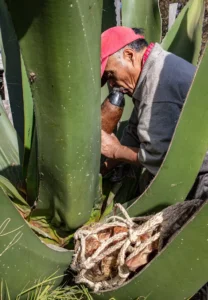
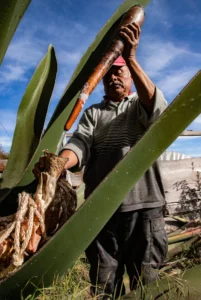
Cultural importance of pulque Mexico
Today pulque has gone from the typical cantina to a trendy drink, representing Mexico in the best national and international kitchens and restaurants.
In fact, it is served in its original recipe or in a dish.
From their traditional kitchens, Mexican cooks, cooks and chefs have taken up this drink as a base or ingredient in many dishes such as breads, beans, salsa borracha, dark chili sauces such as pasilla, marinades, stews, soups, some meringues in desserts and main dishes such as rabbit in pulque from the state of Hidalgo and mixiotes, as well as ice creams and popsicles.
Pulque has become increasingly popular among millennial followers of artisanal products and consumers seeking sustainable products that add value to national products.
For the past two years, this drink has enjoyed its own gastronomic fair in Mexico City, featuring chefs, recipes, cantinas and pulque bars.
The trend for the rescue of the cultural roots of the people has driven the growth in demand for pulque Mexico.
Some of the recipes that include pulque stand out:
- Drunken sauce with pulque
- Beef filet with chile sauce and pulque.
- Pulque bread
- Chicken in pulque sauce
With pulque Mexico we offer the famous pulque curados, fruit pulque and various flavors such as strawberry, pineapple, oatmeal, peanut, marzipan, mango, walnut, almond, pine nut, chocolate cookie and, for the more daring, oyster and shrimp. For flavors we do not stop.
A restaurant with two Michelin stars, the Pujol, uses pulque in the Mole Madre, a signature dish, a pulque sorbet is served with pieces of guava to cleanse the palate, because of its refreshing and acidic flavor.
